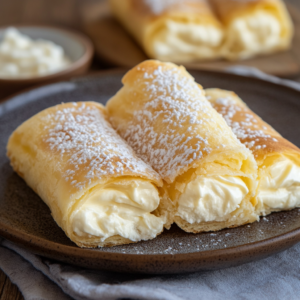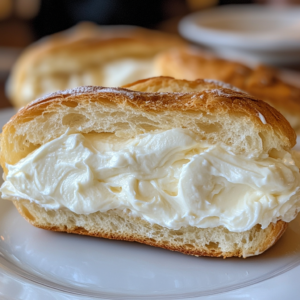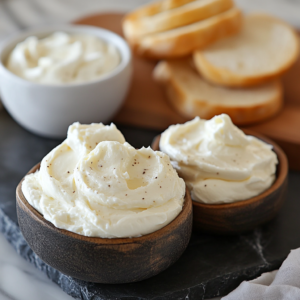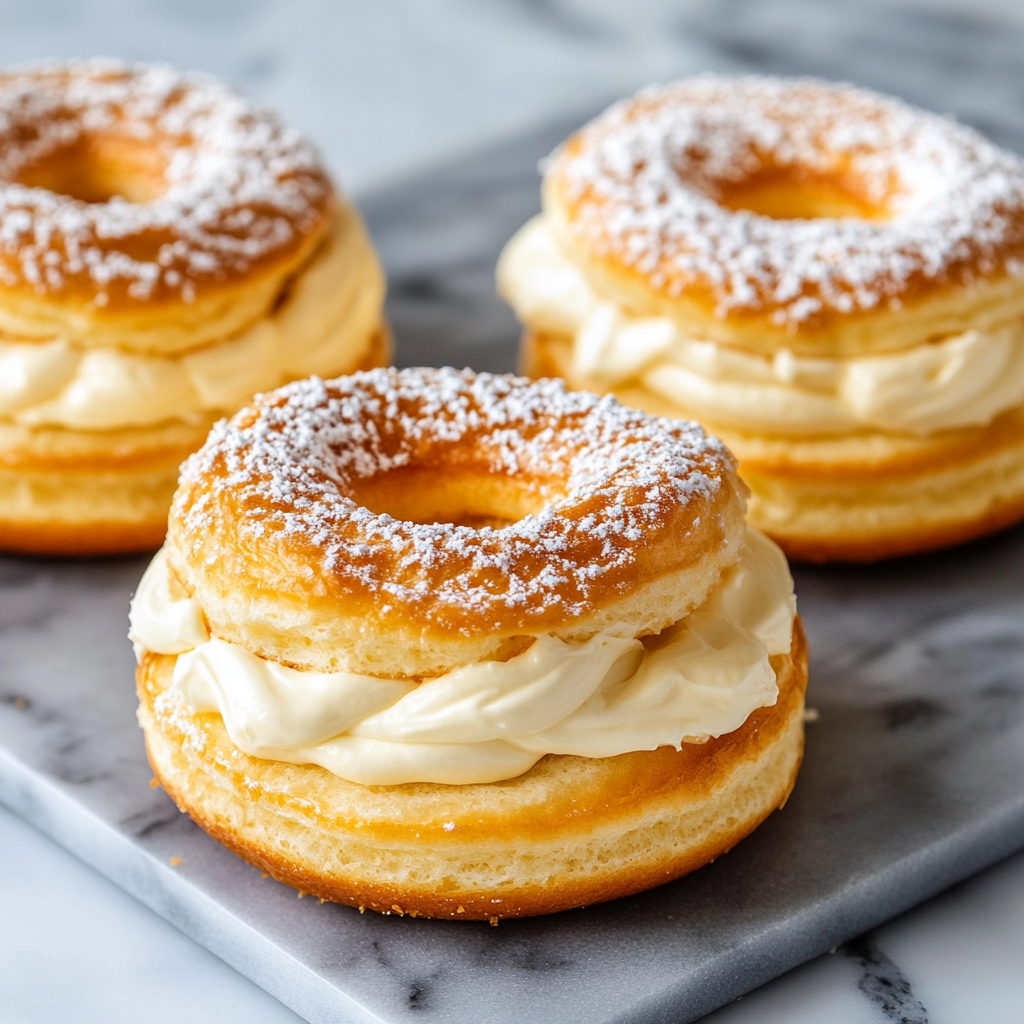Philadelphia cream cheese filling has become an essential ingredient for a wide range of desserts and savory dishes. Whether you’re baking a cheesecake or whipping up a dip, this creamy, versatile filling can elevate any dish. Understanding what’s in Philadelphia cream cheese filling is important for making informed decisions about its use in your cooking.
This guide will break down the core components of Philadelphia cream cheese filling, its nutritional profile, and common uses in both sweet and savory recipes. Additionally, we’ll address frequently asked questions, offer tips for optimal usage, and compare it to homemade versions.
What is Philadelphia Cream Cheese Filling?
Philadelphia cream cheese filling is a pre-made, ready-to-use blend made primarily from cream cheese. Most commonly, it’s used for no-bake cheesecakes, but it also works beautifully in a variety of other dishes. Available in different forms, such as the classic bakeable version and no-bake varieties, it has become a go-to choice for home cooks and professional bakers alike.
One key feature of Philadelphia cream cheese filling is its convenience. There’s no need to measure ingredients or mix anything — you can simply open the tub and use it immediately. This simplicity is especially beneficial for recipes like cheesecakes, where the filling is the star ingredient.
For further information on additives and preservatives commonly found in processed foods like Philadelphia cream cheese filling, you can check out the FDA’s overview on food additives.
Core Ingredients of Philadelphia Cream Cheese Filling
Several key ingredients make up Philadelphia cream cheese filling, each playing a vital role in creating its smooth, rich texture. Here’s a breakdown of the most important components and their purposes.
1. Cream Cheese
The main ingredient is, of course, cream cheese, which is made from pasteurized milk and cream. These dairy components contribute to the filling’s velvety texture and signature tangy flavor. The high-fat content of the cream cheese enhances both its spreadability and mouthfeel.
2. Sweeteners (Sugar)
Sugar is added to balance the tanginess of the cream cheese, making it suitable for desserts. The sugar content is carefully measured, ensuring the filling isn’t overly sweet but provides just the right amount of flavor for various dishes.
3. Stabilizers and Thickeners
The product contains several stabilizers that help maintain its smooth consistency. These include:
- Carob bean gum
- Xanthan gum
- Guar gum
Stabilizers ensure that the filling holds its shape, making it perfect for no-bake recipes. To learn more about how these ingredients affect food products, check out this FDA guide on food additives.
4. Whey Protein Concentrate
Whey protein concentrate is added to boost the product’s protein content while contributing to its creamy texture. Often used in processed foods, whey protein enhances both the nutritional profile and consistency of the filling.
5. Salt and Natural Mold Inhibitors
Philadelphia cream cheese filling contains a small amount of salt to enhance its flavor. Additionally, natamycin, a natural mold inhibitor, helps to extend the product’s shelf life, keeping it fresh for longer without artificial preservatives.
Nutritional Information of Philadelphia Cream Cheese Filling

While Philadelphia cream cheese filling is undeniably delicious, it’s also calorie-dense due to its fat content. Knowing the nutritional profile helps you enjoy it in moderation.
- Calories: A standard serving (around 1/8 of a tub) provides 240 calories, which comes mainly from fat and sugar.
- Fat Content: The filling contains 10 grams of saturated fat per serving. Though this contributes to its creamy texture, it’s important to limit saturated fat intake as part of a balanced diet.
- Carbohydrates and Sugars: Each serving includes 16 grams of sugar, which enhances the dessert’s flavor but should be consumed in moderation.
For more insights into the health impacts of dairy products like cream cheese, explore this Harvard Health article on dairy’s nutritional role.
Common Additives and Their Purposes
Philadelphia cream cheese filling contains stabilizers and thickeners to ensure a consistent texture over time. These ingredients may not be present in homemade versions, but they play an important role in extending the shelf life and improving the stability of the filling.
- Guar gum and xanthan gum: These thickeners maintain the product’s structure, especially in no-bake applications where heat isn’t used to set the filling.
- Natamycin: This natural mold inhibitor extends the shelf life of the product, keeping it fresh without the need for artificial preservatives.
How Philadelphia Cream Cheese Filling Differs from Homemade Versions
There are key differences between Philadelphia cream cheese filling and homemade versions, especially when it comes to ingredients, texture, and shelf life.
1. Ingredient Differences
Homemade cream cheese fillings typically use just a few ingredients like cream cheese, sugar, and vanilla extract. By contrast, store-bought versions contain additional stabilizers and preservatives to ensure a longer shelf life and better texture consistency.
2. Texture and Flavor
Store-bought fillings tend to be smoother and more uniform in texture, thanks to the use of thickeners like xanthan gum. Homemade versions may have a fresher taste but might lack the consistent texture found in processed products.
3. Shelf Life
Homemade fillings need to be consumed within a few days, while Philadelphia cream cheese filling can last for several weeks in the refrigerator. This extended shelf life is due to the inclusion of natamycin, which acts as a natural mold inhibitor.
Popular Recipes Using Philadelphia Cream Cheese Filling

Philadelphia cream cheese filling is a versatile ingredient that can be used in a wide range of sweet and savory recipes. Here are some of the most popular and delicious ways to incorporate this creamy filling into your dishes:
1. No-Bake Cheesecake
One of the most iconic recipes using Philadelphia cream cheese filling is the no-bake cheesecake. This easy, fuss-free dessert allows you to enjoy the rich and creamy texture of cheesecake without having to turn on the oven.
- How to Make It:
- Prepare a graham cracker crust by mixing crushed graham crackers with melted butter and pressing it into a pan.
- Spread Philadelphia cream cheese filling over the crust.
- Refrigerate for at least 4 hours, or until the filling is firm.
- Top with fresh fruits, chocolate, or fruit compote for added flavor.
2. Stuffed Pastries
Philadelphia cream cheese filling works beautifully as a filling for various pastries, such as turnovers, croissants, or Danish pastries. Its smooth texture makes it easy to pipe into pastry dough, creating a rich, flavorful center.
- How to Make It:
- Roll out puff pastry or crescent dough and spoon or pipe the cream cheese filling into the center.
- Fold the dough over, sealing the edges, and bake according to the dough’s instructions.
- For added sweetness, dust the baked pastries with powdered sugar or drizzle with icing.
3. Cream Cheese Dip
For a quick and savory appetizer, use Philadelphia cream cheese filling as the base for a creamy dip. Whether you’re making a classic herb dip or a more elaborate spinach artichoke dip, the filling provides a smooth and rich texture.
- How to Make It:
- Mix the filling with sour cream, shredded cheese, spinach, or artichokes, and season with herbs like garlic, dill, or parsley.
- Serve it warm or cold, with a side of crackers, pita bread, or fresh vegetables for dipping.
4. Cream Cheese Frosting
Turn Philadelphia cream cheese filling into a delicious frosting for cupcakes, cookies, or cakes. Its creamy consistency and slightly tangy flavor make it a perfect complement to sweet baked goods.
- How to Make It:
- Whip the filling with powdered sugar and vanilla extract until smooth.
- Spread or pipe the frosting onto cooled cakes, cupcakes, or cinnamon rolls.
- Top with sprinkles, nuts, or fresh fruit for decoration.
5. Cheesecake-Stuffed French Toast
Elevate your breakfast game with cheesecake-stuffed French toast, a decadent and indulgent morning treat. The filling adds a rich, creamy center to the crispy toast.
- How to Make It:
- Spread Philadelphia cream cheese filling between two slices of bread.
- Dip the sandwich in an egg mixture and cook on a skillet until golden brown.
- Serve with fresh berries, powdered sugar, and maple syrup for a delicious twist on classic French toast.
6. Layered Trifles
Create beautiful and delicious layered desserts like trifles by incorporating Philadelphia cream cheese filling as one of the layers. This filling adds creaminess to every bite and pairs well with various fruits, cakes, and crunchy toppings.
- How to Make It:
- Layer cubes of sponge cake or ladyfingers with the cream cheese filling, fresh fruit, and whipped cream in a large glass bowl.
- Repeat the layers until the bowl is full, finishing with whipped cream and a sprinkling of fruit or cookie crumbs on top.
7. Fruit Tarts
Use Philadelphia cream cheese filling as the creamy base for fresh fruit tarts. Its tangy sweetness pairs perfectly with the natural flavors of fresh fruits.
- How to Make It:
- Spread the filling over a pre-baked tart shell.
- Arrange slices of fresh fruit like strawberries, blueberries, or kiwi on top.
- For a glossy finish, brush the fruit with a light coat of apricot or berry glaze.
8. Cheesecake-Stuffed Strawberries
For a simple yet elegant dessert, try cheesecake-stuffed strawberries. This bite-sized treat is perfect for parties or as a light dessert.
- How to Make It:
- Hull large strawberries and fill them with Philadelphia cream cheese filling using a piping bag.
- Garnish with crushed graham crackers, chocolate drizzle, or a mint leaf for added flavor and presentation.
9. Savory Stuffed Mushrooms
For a savory twist, use Philadelphia cream cheese filling to stuff mushrooms. This dish makes a delicious appetizer or side dish for dinners and gatherings.
- How to Make It:
- Remove the stems from large mushroom caps and stuff them with the cream cheese filling.
- Add herbs, garlic, and breadcrumbs on top for added flavor and texture.
- Bake until the mushrooms are tender and the filling is golden and bubbly.
10. Tiramisu
Incorporate Philadelphia cream cheese filling into a tiramisu for a creamy, rich layer that complements the coffee-soaked ladyfingers.
- How to Make It:
- Layer the ladyfingers soaked in espresso with the cream cheese filling and a dusting of cocoa powder.
- Refrigerate for several hours to let the flavors meld and the filling set.
These recipes highlight the versatility of Philadelphia cream cheese filling, making it a perfect addition to your kitchen whether you’re creating sweet or savory dishes. Experiment with these ideas to discover even more delicious ways to enjoy this creamy, flavorful product.
FAQs: Common Questions About Philadelphia Cream Cheese Filling
Is Philadelphia cream cheese filling gluten-free?
Yes, Philadelphia cream cheese filling is gluten-free, making it a safe option for those with gluten sensitivities or celiac disease.
Can I use Philadelphia cream cheese filling for baking?
Although it’s designed primarily for no-bake recipes, the filling can also be used in baked dishes like cheesecakes or stuffed pastries. It holds up well under heat and retains its creamy texture.
How long does Philadelphia cream cheese filling last once opened?
After opening, the filling should be stored in the refrigerator and consumed within 7 to 10 days for optimal freshness.
What is the difference between no-bake and classic Philadelphia cream cheese filling?
No-bake versions contain additional stabilizers that allow the filling to set without baking. The classic version, on the other hand, is designed to be baked for a firmer, more structured filling.
Does Philadelphia cream cheese filling contain artificial preservatives?
The filling uses natamycin as a natural mold inhibitor but does not contain artificial preservatives.
Expert Tips for Using Philadelphia Cream Cheese Filling

- Soften Before Use: To achieve the best texture, allow Philadelphia cream cheese filling to sit at room temperature for about 15–20 minutes. This softens the filling, making it easier to spread or pipe into desserts and pastries.
- Chill for Best Results: For no-bake cheesecakes or other chilled desserts, refrigerate the filling for at least four hours before serving. This allows the filling to fully set, giving your dessert a firm, sliceable texture.
- Enhance with Whipped Cream: To lighten the texture and create a fluffier filling, try folding in whipped cream. This works especially well for mousse-based desserts or layered parfaits, adding extra volume and a lighter consistency.
- Blend with Other Flavors: Add extracts like vanilla, almond, or even citrus to customize the flavor of the cream cheese filling. This enhances the base flavor and makes the filling more versatile for various recipes.
- Use for Savory Dishes: Don’t limit the filling to desserts! Incorporate Philadelphia cream cheese filling into savory dishes such as dips, stuffed mushrooms, or even spread inside savory pastries. It pairs well with herbs, garlic, or smoked salmon.
- Combine with Fresh Fruits: For added texture and a burst of freshness, layer the cream cheese filling with fresh fruits like strawberries, blueberries, or mango. The fruit’s natural sweetness and tartness complement the richness of the filling perfectly.
Control Sweetness: If you find the filling too sweet for certain recipes, consider mixing it with plain cream cheese to tone down the sweetness without compromising the texture. This is particularly useful for savory applications or when balancing flavors in a dessert.
- Perfect for Layered Desserts: Use the filling as a base for trifles, layered parfaits, or tiramisu. The thick consistency holds its shape well, making it ideal for desserts that require structure.
- Experiment with Crunchy Textures: To add crunch, combine the filling with ingredients like crushed graham crackers, cookie crumbs, or chopped nuts. This contrast in textures elevates your dessert and makes each bite more interesting.
- Store Properly: Once opened, store the filling in an airtight container in the refrigerator. It should be consumed within 7 to 10 days for the best taste and quality. Avoid freezing the filling, as this can negatively impact its texture.
Conclusion
Philadelphia cream cheese filling offers a convenient and versatile solution for both sweet and savory dishes. Its creamy texture, combined with its balanced flavor, makes it a favorite among home cooks and professional bakers alike. By understanding its ingredients and how it compares to homemade alternatives, you can better decide when and how to use it in your culinary creations.

